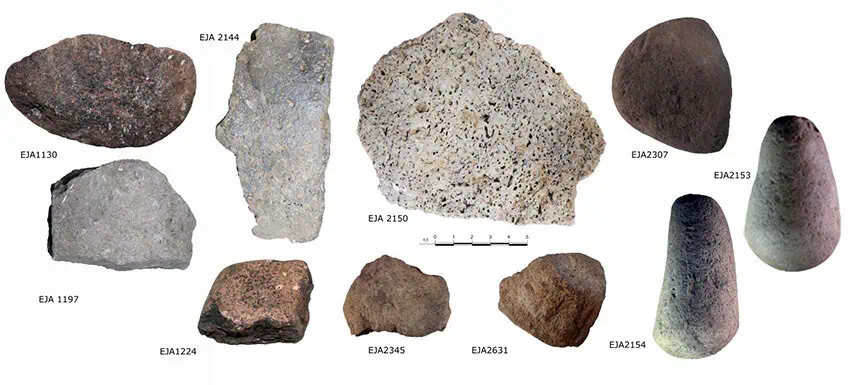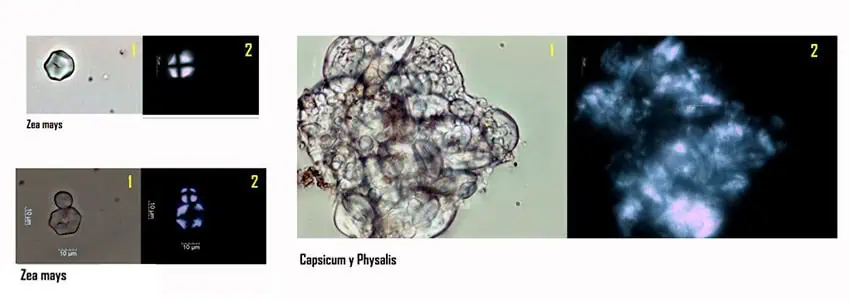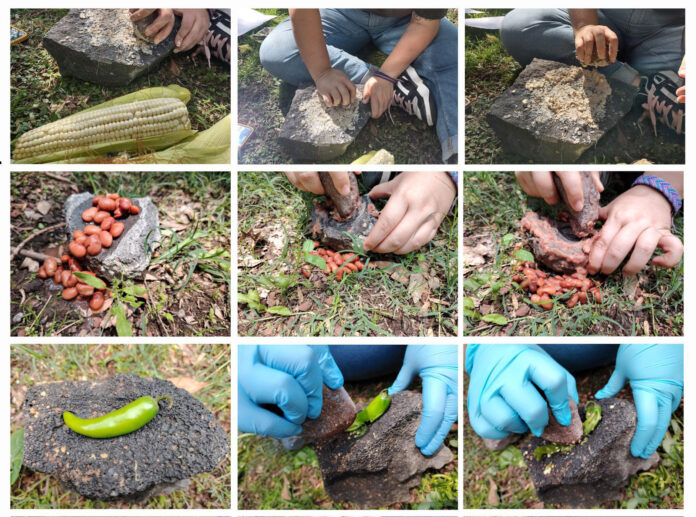Ancient corn remains found in grinding tools at a Xochimilco archeological site have provided scientists with a new perspective into how agriculture first developed in the Valley of Mexico (also known as the Basin of Mexico).
Today, Xochimilco is a popular tourist destination in Mexico City primarily known for its water canals and trajineras (colorful local boats) and for being the home of the axolotl, an endangered species of salamander. But thousands of years ago, it was home to some of the area’s first permanent residents.

The new findings come from artifacts dating back 6,000 years that were found at the San Gregorio Atlapulco archeological site, in a former islet in the Xochimilco canals.
“The site of San Gregorio, Atlapulco occupied during this transitional phase towards the development of early villages (6000–3500 BCE), has revealed a rich archaeological record that has allowed us to investigate the subsistence strategies of complex hunter-gatherers in the southern Basin of Mexico,” researchers wrote in an article published in the Journal of Archaeological Science: Reports.
The artifacts, analyzed by researchers from the National Institute of Anthropology and History (INAH) and the National Autonomous University of Mexico (UNAM), revealed residues of sweet potato, beans, corn, tomato, chile and yam.
Researchers used a methodology for the first time in Mexico, based on starch analysis. Using scanning electron microscopy and other techniques, they found traces of wear on these grinding stone tools, confirming grinding activities on their surfaces.

The findings suggest that the diet of these societies was based on gathering plants and resources from the lake plains, supplemented with domesticated plants like corn. Researchers think this diet was practiced during a period of climatic improvement prior to the appearance of the earliest ceramics in what is now central Mexico.
“This discovery helps us define the preceramic period and corroborates the vital role played by lake communities in the development of the first sedentary groups and the adoption of domesticated plants for their diet,” the INAH said in a statement.
“This study reevaluates one of the most poorly understood periods in the archaeology of the Basin of Mexico,” research concluded.
This research project is part of the “Population, Initial Agriculture and Village Societies in the Basin of Mexico,” co-directed by researchers from UNAM and INAH. The study seeks to explore two critical processes in the human settlements in the area of modern-day Mexico City: the initial population and the development of agriculture.
It also seeks to understand how the first residents of the area gave up their nomadic lifestyles to build villages and develop agriculture in the lake communities south of the basin.
Mexico News Daily
